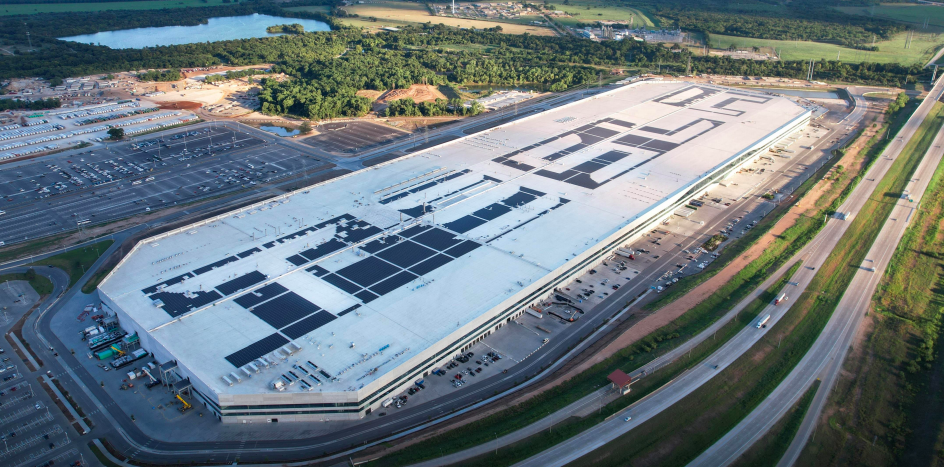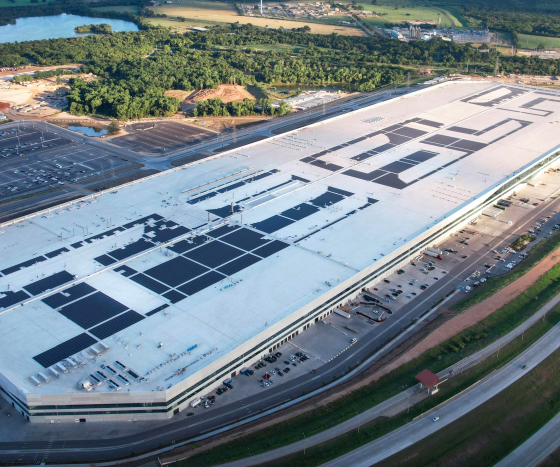

News
Elon Musk sees Tesla ($TSLA) becoming worth more than Apple ($APPL) and Saudi Aramco combined
Tesla held its third-quarter 2022 earnings call today following the release of its shareholder letter. During the call, Technoking Elon Musk said that he could see the company becoming more valuable than Apple and Saudi Aramco combined.
Elon Musk said that he’d said on another earnings call that he thought it was possible for Tesla to be worth more than Apple. At the time, Apple was worth around $700 billion. Today, Tesla is worth almost $700 billion based on the company’s market capitalization. During today’s call, Elon Musk shared his new opinion on Tesla’s future value.
“Now I’m of the opinion that we can far exceed Apple’s current market cap. I see a path for Tesla to be worth more than Apple and Saudi Aramco combined,” the Technoking said. Combined, the two companies are worth just over $4 trillion.
As of October 2022, Saudi Aramco has a market cap of $2.092 trillion, making it the world’s second most valuable company. Currently, Apple has a market cap of $2.31 trillion and was the first company to hit $3 trillion earlier this year.
These two companies that Tesla could overtake may have very different products but both can be considered competitors of Tesla. Tesla’s mission is to accelerate the transition to sustainability, as Elon Musk said tonight in response to one of our tweets. This translates to putting oil companies such as Saudi Aramco out of business in the long run.
Although Apple isn’t an oil company but a technology company, Tesla isn’t just an automaker nor just an energy company. Tesla is building its own artificial intelligence, robot, and batteries, and could possibly get into the mining business. These products are in addition to its EVs and energy products.
Elon Musk has said many times that he sees Tesla as a dozen or more startups. “Tesla is really a dozen or more startups if you look at all the things created from scratch that aren’t present in other car companies.”
Tesla is really a dozen or more startups if you look at all the things created from scratch that aren’t present in other car companies
— Elon Musk (@elonmusk) April 21, 2022
During today’s earnings call, Elon Musk pointed out that there are companies that only make batteries and do well, yet making batteries is just one of the many things Tesla does. The following is a list of products and services besides EVs that Tesla offers:
- Solar and Powerwall
- Utility-scale battery storage (Megapacks)
- Optimus bot
- Tesla is building the Dojo Supercomputer to train neural networks.
- Full Self-Driving, Autopilot, and artificial intelligence
- Insurance
- Its own charging network that will soon open to non-Tesla EVs in the U.S.
- Batteries
- Tesla makes its own seats for its vehicles and although it’s not selling these, it is saving money by making its own seats in-house.
- Chips
- Services for customers, such as Premium Connectivity
- In 2020, Elon Musk said that Tesla was working on HVAC improvements for vehicles and that the designs developed could potentially apply to HVAC for homes. In June 2022, Elon Musk said that HVAC is on a future product list.
- Lithium & mining–possibly. Elon Musk has said before that he doesn’t want Tesla to get into the mining industry however, in today’s call, he said that Tesla would do whatever it had to do.
Disclosure: Johnna is a $TSLA shareholder and believes in Tesla’s mission.
Your feedback is essential. If you have any comments or concerns or see a typo, you can email me at johnna@teslarati.com. You can also reach me on Twitter at @JohnnaCrider1.
Teslarati is now on TikTok. Follow us for interactive news & more. Teslarati is now on TikTok. Follow us for interactive news & more. You can also follow Teslarati on LinkedIn, Twitter, Instagram, and Facebook.

News
Tesla starts showing how FSD will change lives in Europe
Local officials tested the system on narrow country roads and were impressed by FSD’s smooth, human-like driving, with some calling the service a game-changer for everyday life in areas that are far from urban centers.

Tesla has launched Europe’s first public shuttle service using Full Self-Driving (Supervised) in the rural Eifelkreis Bitburg-Prüm region of Germany, demonstrating how the technology can restore independence and mobility for people who struggle with limited transport options.
Local officials tested the system on narrow country roads and were impressed by FSD’s smooth, human-like driving, with some calling the service a game-changer for everyday life in areas that are far from urban centers.
Officials see real impact on rural residents
Arzfeld Mayor Johannes Kuhl and District Administrator Andreas Kruppert personally tested the Tesla shuttle service. This allowed them to see just how well FSD navigated winding lanes and rural roads confidently. Kruppert said, “Autonomous driving sounds like science fiction to many, but we simply see here that it works totally well in rural regions too.” Kuhl, for his part, also noted that FSD “feels like a very experienced driver.”
The pilot complements the area’s “Citizen Bus” program, which provides on-demand rides for elderly residents who can no longer drive themselves. Tesla Europe shared a video of a demonstration of the service, highlighting how FSD gives people their freedom back, even in places where public transport is not as prevalent.
What the Ministry for Economic Affairs and Transport says
Rhineland-Palatinate’s Minister Daniela Schmitt supported the project, praising the collaboration that made this “first of its kind in Europe” possible. As per the ministry, the rural rollout for the service shows FSD’s potential beyond major cities, and it delivers tangible benefits like grocery runs, doctor visits, and social connections for isolated residents.
“Reliable and flexible mobility is especially vital in rural areas. With the launch of a shuttle service using self-driving vehicles (FSD supervised) by Tesla in the Eifelkreis Bitburg-Prüm, an innovative pilot project is now getting underway that complements local community bus services. It is the first project of its kind in Europe.
“The result is a real gain for rural mobility: greater accessibility, more flexibility and tangible benefits for everyday life. A strong signal for innovation, cooperation and future-oriented mobility beyond urban centers,” the ministry wrote in a LinkedIn post.
News
Tesla China quietly posts Robotaxi-related job listing
Tesla China is currently seeking a Low Voltage Electrical Engineer to work on circuit board design for the company’s autonomous vehicles.

Tesla has posted a new job listing in Shanghai explicitly tied to its Robotaxi program, fueling speculation that the company is preparing to launch its dedicated autonomous ride-hailing service in China.
As noted in the listing, Tesla China is currently seeking a Low Voltage Electrical Engineer to work on circuit board design for the company’s autonomous vehicles.
Robotaxi-specific role
The listing, which was shared on social media platform X by industry watcher @tslaming, suggested that Tesla China is looking to fill the role urgently. The job listing itself specifically mentions that the person hired for the role will be working on the Low Voltage Hardware team, which would design the circuit boards that would serve as the nervous system of the Robotaxi.
Key tasks for the role, as indicated in the job listing, include collaboration with PCB layout, firmware, mechanical, program management, and validation teams, among other responsibilities. The role is based in Shanghai.
China Robotaxi launch
China represents a massive potential market for robotaxis, with its dense urban centers and supportive policies in select cities. Tesla has limited permission to roll out FSD in the country, though despite this, its vehicles have been hailed as among the best in the market when it comes to autonomous features. So far, at least, it appears that China supports Tesla’s FSD and Robotaxi rollout.
This was hinted at in November, when Tesla brought the Cybercab to the 8th China International Import Expo (CIIE) in Shanghai, marking the first time that the autonomous two-seater was brought to the Asia-Pacific region. The vehicle, despite not having a release date in China, received a significant amount of interest among the event’s attendees.
Elon Musk
Elon Musk and Tesla AI Director share insights after empty driver seat Robotaxi rides
The executives’ unoccupied tests hint at the rapid progress of Tesla’s unsupervised Robotaxi efforts.

Tesla CEO Elon Musk and AI Director Ashok Elluswamy celebrated Christmas Eve by sharing personal experiences with Robotaxi vehicles that had no safety monitor or occupant in the driver’s seat. Musk described the system’s “perfect driving” around Austin, while Elluswamy posted video from the back seat, calling it “an amazing experience.”
The executives’ unoccupied tests hint at the rapid progress of Tesla’s unsupervised Robotaxi efforts.
Elon and Ashok’s firsthand Robotaxi insights
Prior to Musk and the Tesla AI Director’s posts, sightings of unmanned Teslas navigating public roads were widely shared on social media. One such vehicle was spotted in Austin, Texas, which Elon Musk acknowleged by stating that “Testing is underway with no occupants in the car.”
Based on his Christmas Eve post, Musk seemed to have tested an unmanned Tesla himself. “A Tesla with no safety monitor in the car and me sitting in the passenger seat took me all around Austin on Sunday with perfect driving,” Musk wrote in his post.
Elluswamy responded with a 2-minute video showing himself in the rear of an unmanned Tesla. The video featured the vehicle’s empty front seats, as well as its smooth handling through real-world traffic. He captioned his video with the words, “It’s an amazing experience!”
Towards Unsupervised operations
During an xAI Hackathon earlier this month, Elon Musk mentioned that Tesla owed be removing Safety Monitors from its Robotaxis in Austin in just three weeks. “Unsupervised is pretty much solved at this point. So there will be Tesla Robotaxis operating in Austin with no one in them. Not even anyone in the passenger seat in about three weeks,” he said. Musk echoed similar estimates at the 2025 Annual Shareholder Meeting and the Q3 2025 earnings call.
Considering the insights that were posted Musk and Elluswamy, it does appear that Tesla is working hard towards operating its Robotaxis with no safety monitors. This is quite impressive considering that the service was launched just earlier this year.








